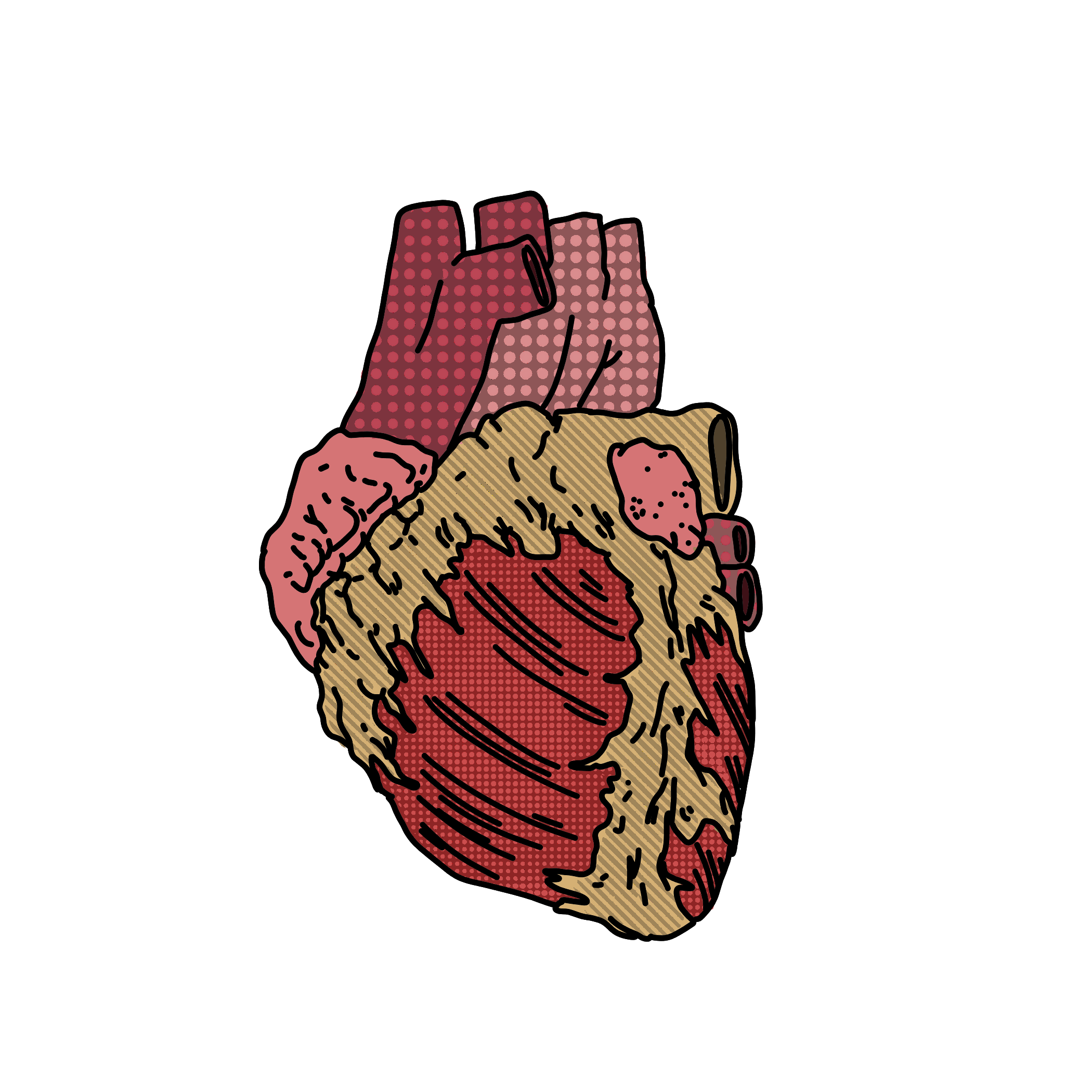Yale study identifies potential target genes to develop therapeutic treatments for heart defect
A team of Yale researchers, led by Jui Dave and Daniel Greif, has identified potential therapeutic targets for combating the effects of supravalvular aortic stenosis.

Anasthasia Shilov
A novel Yale study has identified a gene that may be crucial for developing therapeutic treatments for supravalvular aortic stenosis, or SVAS, a heart defect that results in complications in the main artery branching off of the heart.
Members of the Greif Lab have located targets that may play an essential role in developing treatments for SVAS. The team was headed by Jui Dave, associate research scientist in the Greif Lab and first author of the paper, and Daniel Greif, an associate professor of cardiology at the Yale School of Medicine and the lab’s principal investigator. Their findings were published in the Journal of Clinical Investigation on Jan. 6. Other collaborators on the study included Kathleen Martin, co-director of the Yale Cardiovascular Research Center, and Raja Chakraborty, an associate research scientist in the Martin Lab.
“SVAS is a disease which affects newborn kids, and it’s a vascular disease,” Dave said. “My expertise is in cardiovascular research, so I focus on blood vessel development and different kinds of blood vessels in the brain or the heart or just in different regions of the body. This is a disease which is quite rare, so people generally don’t focus on the therapeutic side of it. It’s a rare disease, but it’s very lethal.”
Blood is transported from the heart to other parts of the body by means of a primary artery called the aorta. SVAS causes a narrowing, or stenosis, of the aorta’s lumen, which is the space enclosed within the pipe-like structure of the artery. The walls of the lumen, like the majority of the aorta’s structure, are primarily composed of smooth muscle cells, which secrete a protein called elastin that provides the aorta with its elastic strength and regulates the production of these smooth muscle cells.
SVAS results from mutations in the elastin gene that decrease the overall quantity of elastin in the aorta. As a result, the smooth muscle cells divide and multiply at a higher rate to form more cell layers on the interior of the artery. These layers restrict the aorta by narrowing the lumen and disrupting blood flow, even leading to heart failure in certain circumstances. Thus far, primary treatment for SVAS entails a major surgical procedure, but this procedure is not without complications. This is why the search for therapeutic treatments for the disease is so important, according to Greif.
“[Stenosis] can affect the aorta commonly, but it can also affect other vessels as well,” Greif said. “Some of the pulmonary vessels can be affected, and those are harder to treat surgically because they can be smaller and you have to get into the lungs.”
The team turned the focus of its research to the Notch signaling pathway, which plays an important role in the production of smooth muscle cells. After studying the pathway in several different contexts, including mouse models and cell cultures, the team was able to conclude that the pathway became overactivated when the elastin gene was “deleted” or even only partially removed.
The researchers investigated the details of this phenomenon and found that deleting the NOTCH3 gene or the JAGGED1 ligand that activate the pathway could result in partially recovering the original multiplication rate of the smooth muscle cells and fostering a degree of restoration in the aortic wall. The team further concluded that the elastin deficiency was a result of the manner in which smooth muscle cells expressed JAGGED1.
“We showed data for the first time that there are epigenetic changes occurring in smooth muscle cells within elastin deletion,” Dave said. “For example, the addition of a methyl group to 5-cytosine of DNA by an enzyme DNMT1 renders closed chromatin conformation, making it inaccessible to transcriptional machinery and thus causing gene deactivation. We found that DNMT1 levels were reduced with the lack of elastin, and this was responsible for the NOTCH3/JAGGED1 pathway overactivation.”
According to Dave, these epigenetic changes –– transforming DNA outside of directly altering the genome itself, as well as changes in chromatin –– proved to be significant in gene regulation and the functioning of these cells.
Developing a deeper understanding of the mechanisms that drive smooth muscle cell multiplication in blood vessels and recognizing potential targets for treatments could have big implications for individuals suffering from SVAS.
Lina Ntokou, a postdoctoral researcher in the Greif Lab, said that the results of the study add a crucial element to the understanding of diseases like SVAS.
“What was exciting for me is that this study provides several targets for potential therapeutics in the future, which was missing from the picture of such diseases,” Ntokou said.
According to Greif, the real meaning of the work being conducted in treating SVAS, improving patients’ lives, drives his lab’s motivation to create novel therapies in this field of research.
He and his colleagues have directly witnessed the impacts of their work. They were recently contacted by a mother who came across their research and was hopeful as to what it might mean for her child.
“We just got an email from a mother of a child who suffers from supravalvular aortic stenosis,” Greif said. “She said a little bit about her child’s medical condition and appreciated that we’re working on it and was inquiring about any new drugs in the pipeline that may be coming along to treat SVAS. The idea that we really are doing things that are important for people’s wellbeing and getting a real exposure, that is very powerful and very motivational for us to continue to try to find viable biology to try to inform therapeutics.”
The Greif Lab is part of the Yale Cardiovascular Research Center.







